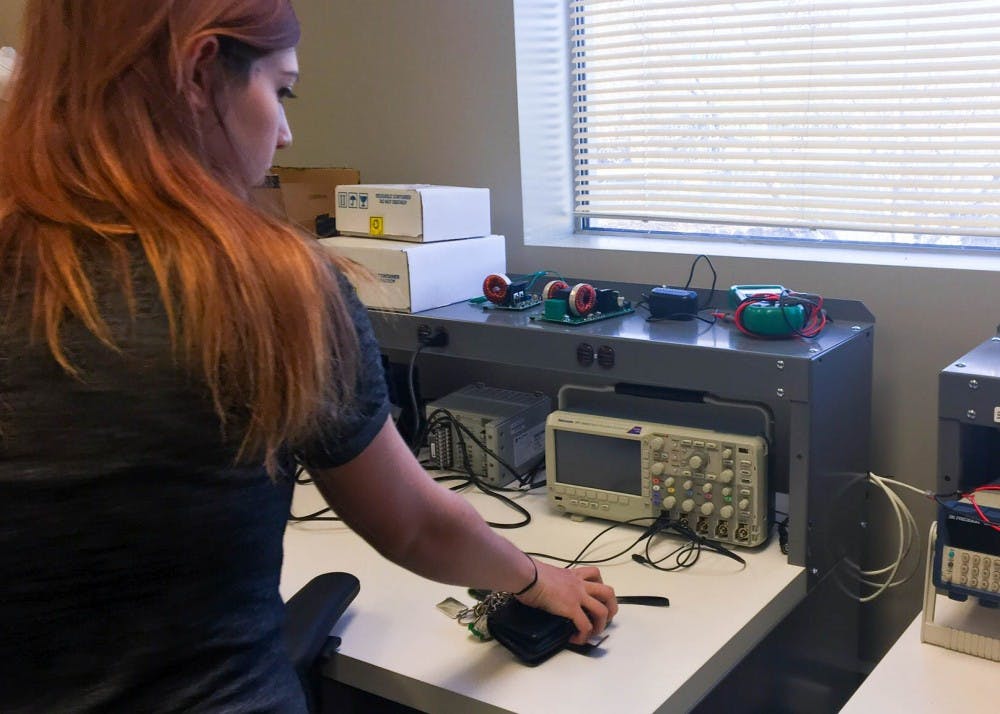A team of researchers on ASU's Polytechnic campus are taking a multifaceted approach to develop new independent power technology.
ASU's Laboratory for Energy And Power Solutions, also known as LEAPS, focuses on bringing new energy solutions to life by developing microgrids. Microgrids are sources of energy that can connect or disconnect from major power grids independently. Tech like this ensures a steady and consistent supply to power.
In developed nations, organizations such as hospitals or data centers use microgrids as a backup source of power in the event of an outage. In more isolated communities, a microgrid could be a lifeline to power.
Members of the lab work in several cohorts, which may overlap or work independently of each other.
Samantha Janko, a doctoral student in Systems Engineering, focuses on the interaction between technologies. Janko and others are involved in projects that span from making more adaptable inversion technology to providing clean water solutions.
The inversion technology, which turns direct currents into alternating currents, is currently available on the market and designed to be rigid and incompatible between different brands. Janko and the rest of her team are developing tech that's more universally compatible.
“If you invest everything you have into one brand’s technology, you're kind of stuck,” Janko said.
The cohorts working on projects for LEAPS include microgrids and distributed energy resources, off-grid solutions, capacity building and Resilient Infrastructure Simulation Environment (RISE). The groups serve different purposes but often find themselves looking for parallel solutions.
The microgrids and distributed energy resource group works with technology, such as solar panels, that can be put anywhere. They examine how certain microgrids can be used, determining the correct purpose and size for the technology that is being developed.
They often work in conjunction with the off-grid solutions group, which examines microgrids that work in isolation from larger grids. This is the technology that comes into play most often in developing countries, disaster zones and island nations that do not have larger grids available.
The team at LEAPS is currently constructing models of housing conditions around the world to help them visualize how microgrid technology can work with favelas, mud huts or lean-tos, as well as other shelters that are used around the world.
Hanna Breetz, a scientist at the Julie Ann Wrigley School of Sustainability, said that it is important to consider sustainability in more than just the ecological sense. Technology, in order to be maximally efficient and useful, must be economically and culturally sustainable as well.
“The whole concept of sustainability is about drawing connections between these three pillars and thinking about, in a much more holistic sense, what the impact is on the environment but also on people,” Breez said.
The LEAPS team concurred and added that education is important when providing new technology to others, so that the recipients understand why they are using the microgrids.
Alexander Mobley, a senior in engineering, works primarily with the capacity building group that offers education and training to those interested in microgrids.
“That one's really just about getting more information out there, not just for people who don't know anything at all,” Mobley said. “It could also be someone who maybe came from a generation plant that was decommissioned. So they may have had 20 years experience, but they just don't know where to apply their knowledge next.”
Historically, people doubted the popularity of solar technology before it became more widespread, and microgrids are trending in a similar way, Mobley said.
The RISE group is involved with software that models how different systems may be related.
“They look for the interdependencies you may not think to see,” Mobley said.
Many systems, such as water, electric and road systems overlap. In the face of disaster, one failure could cause another failure in an interconnected system.
“They're working on simulating that environment and being able to train people for contingencies and analysis,” Mobley said. “It lets them play in to see how everything connects together.”
The group based at Polytechnic manufactures much of the supplies that they use on campus, allowing them to get a more hands-on and intimate experience with the technology that they are creating.
“Every semester, I've had a couple of projects that I'm working on hands-on building things,” Mobley said. “It's a lot more of the implementation. It's a lot more interdisciplinary.”
Janko said that the set-up and facilities at their campus are uniquely geared to their work for efficiency and ease. Students working at LEAPS can cut and weld their own materials and visualize their products before contracting outside manufacturers to create the final microgrid products.
“Instead of sit and learn, we are doing,” Janko said.
Reach the reporter at sabine.galvis@asu.edu or follow @sabinegalvis on Twitter.
Like State Press on Facebook and follow @statepress on Twitter.




